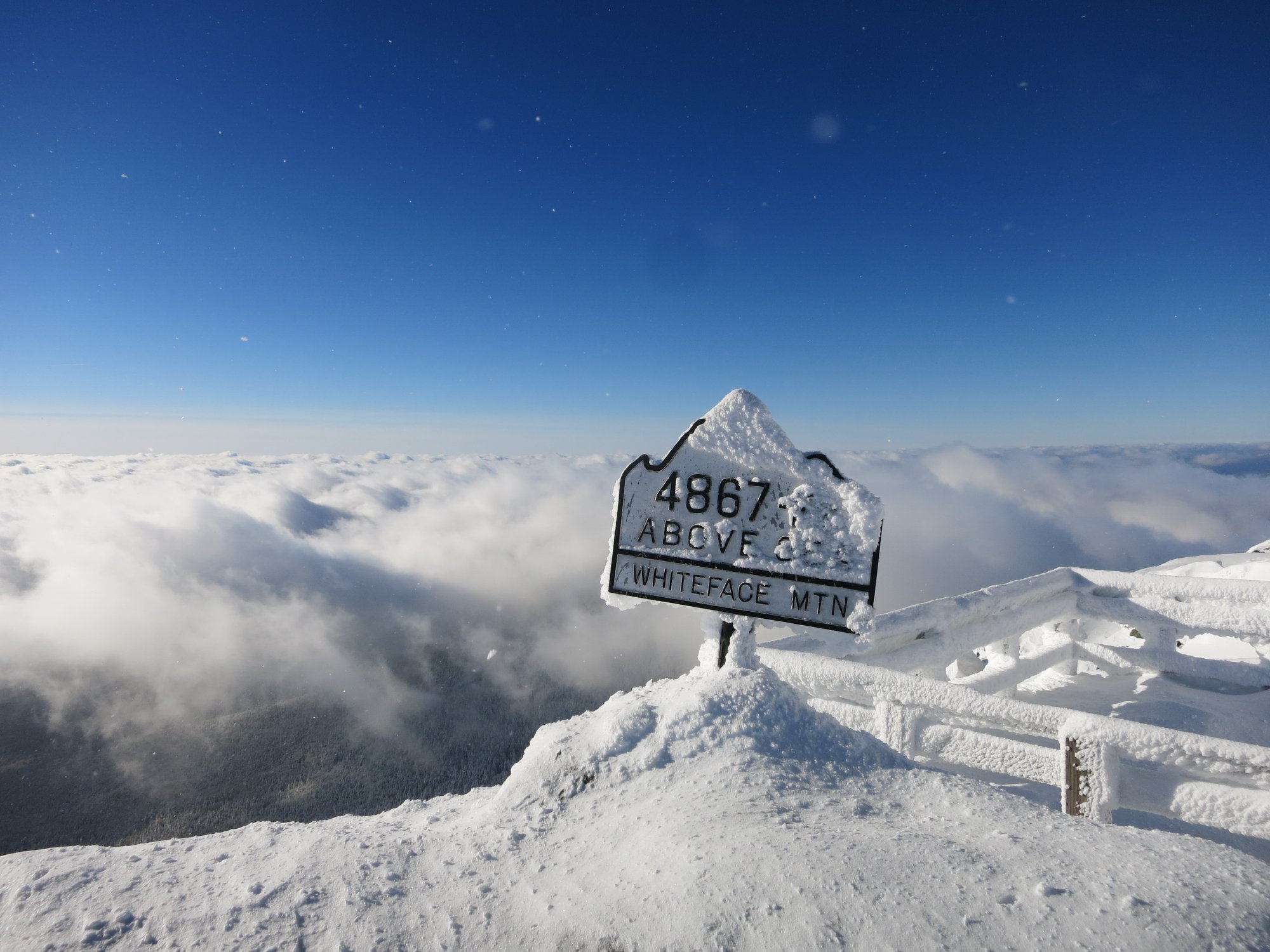
On a perfect summer day, the summit of Whiteface is dotted with humans: hikers savoring stunning views — as far as Canada and Vermont on a clear day — and a well-earned snack, other visitors emerging from an elevator built into the mountain, cars of families and retired couples slowly winding up the Veterans’ Memorial Highway. The summit of the state’s fifth highest mountain is accessible for everyone. Some people go once, take photos, tell their friends how much fun it was, and move on to different adventures. But beyond the hikers and the tourists there are others who spend a lot of time on the summit, who make the trip up in all kinds of weather, all year round. Whether the sun is shining or a polar vortex is pushing frigid air over the top, the staff of the Atmospheric Sciences Research Center Whiteface Field Station are on the summit or just down the slope of the mountain. It may be the coolest — literally and figuratively — job in the Adirondacks.
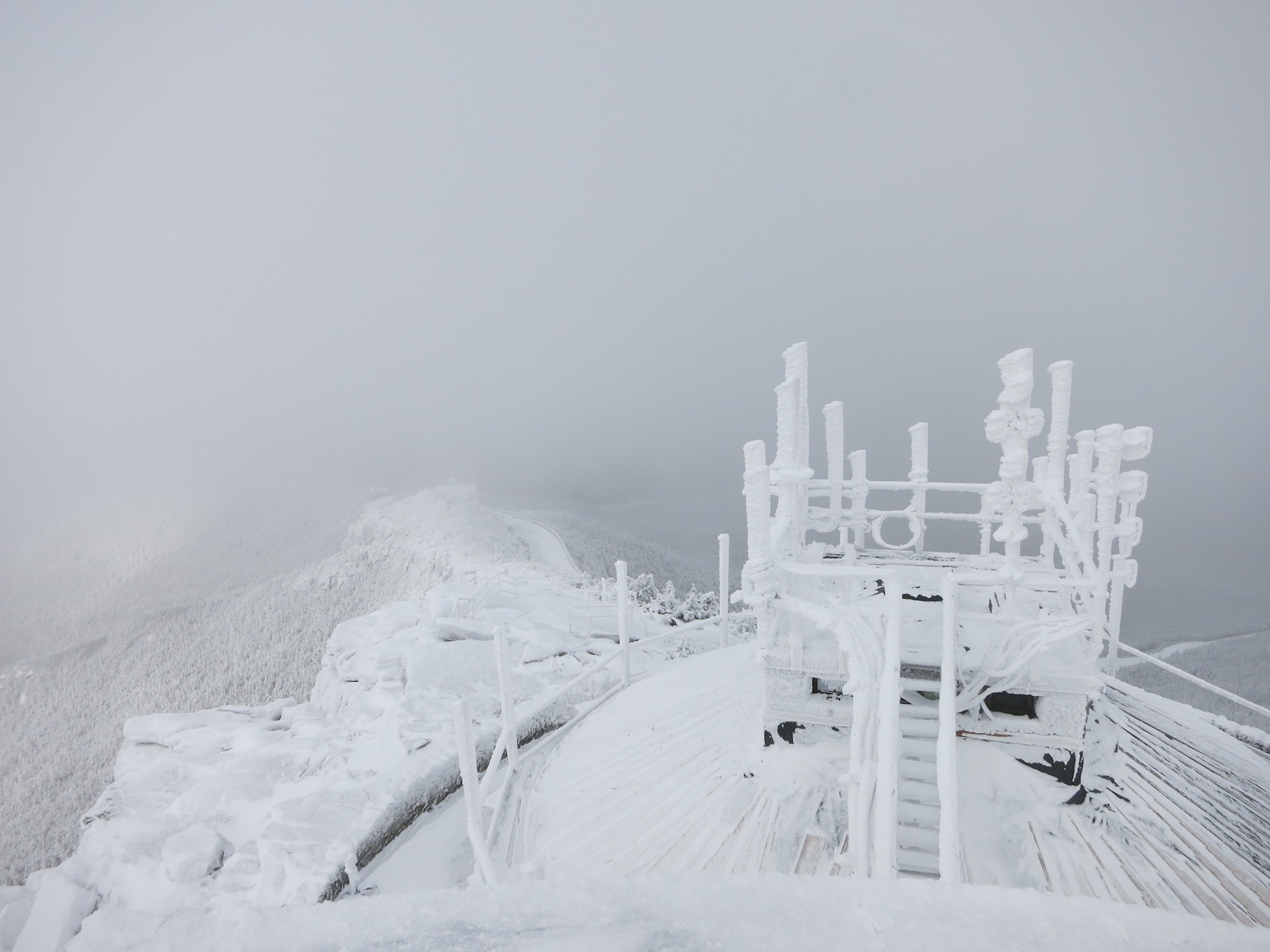
The ASRC is tucked away from the ski slope and the Whiteface Veterans’ Memorial Highway on the side of what is known as Marble Mountain. Marble Mountain was the first ski area at Whiteface, but it didn’t last, in large part due to the weather conditions on that particular slope. The spot wasn't great for skiing, but as it turns out, it was great for something else: studying the weather. The ASRC was founded in February of 1961, making this year it's 50th in operation. Over the years, the ASRC and its staff of scientists, visiting researchers, and support staff have made this their base to study the atmosphere and specifically precipitation monitoring: all of the chemical components that make up the air we breathe, the rain and snow that falls on us, and the clouds that drift by, creating a massive body of data that helps us all understand what is happening in the sky above us.
Always interested in — not always understanding — anything scientific, I was delighted at the opportunity to visit the ASRC to learn more about it. What I found is that the science is amazing, but the people who work there are even more interesting.
Paul Casson
What did you want to be when you were a kid? An astronaut maybe, or a firefighter? For some of us, those childhood goals remain a fun dream, or an interesting hobby; not everyone gets to see that goal come to life. ASRC's Site Manager Paul Casson did. In December of 1984, PBS aired a new episode of the science series Nova, focusing on the effects of acid rain. The episode highlighted cloud collection on the summit of Whiteface Mountain and when young Paul saw it, he was immediately interested. Casson would grow up to attend Paul Smith’s College and has worked in the natural sciences ever since. He started working at ASRC in 1994 and has been a crucial part of the team ever since.
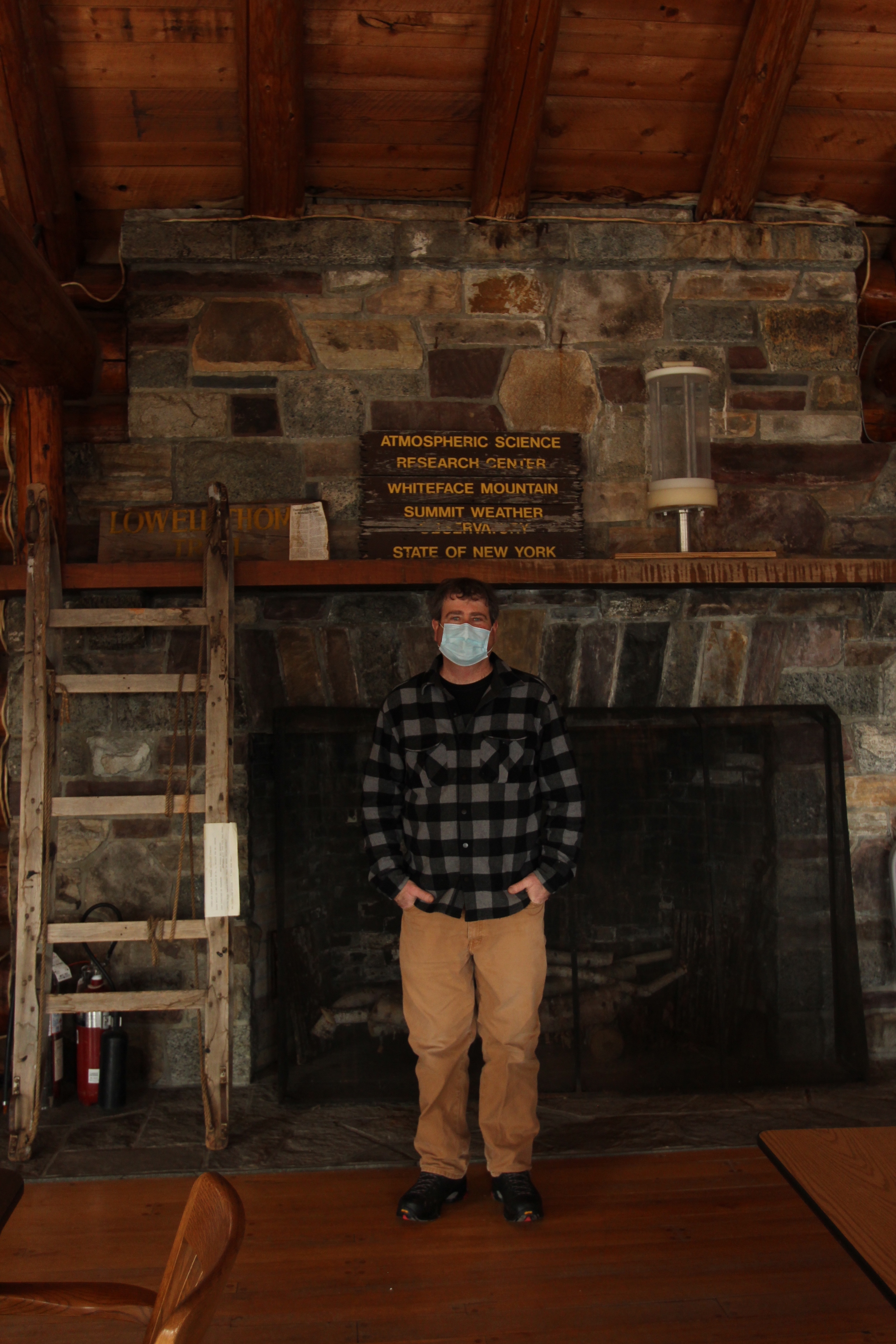
For Casson, every day is different. There is no typical day at ASRC, thanks to the numerous facets of his job. Some days he is up on the summit, others down at the lodge. He facilitates the science, making sure that everything works as it should, collecting data, running samples to the lab, calibrating instruments, and keeping the lodge, annex, and summit silo in tip-top shape. Some things, such as using a passive cloud collector — one of the only ones in the United States — to study cloud water, can only be done in summer. Winter brings other challenges and opportunities. He's also deeply involved in preserving the history of the ASRC, noting that "the early days are important" to understand where the ASRC is today and all that it has accomplished. It's a big job. And yet, in talking to Casson, there is no sense that this is work, some chore to be undertaken. As he puts it so clearly, “It’s a labor of love."
Casson also has a role in welcoming visitors to the lodge, whether it's giving a tour or simply greeting a hiker who happens to stop in. As he sees it, part of his role is to integrate tourism and science: getting visitors interested in learning more about responsible land use, making the lodge a family-friendly destination to tour, and showing others that the land use protections that surround the lodge have been been instrumental in its scientific success. Whiteface is the first major uprising to encounter weather coming from the west, and the lack of development around it ensures that the data is not compromised by, say, an iron mine.
Paul Casson asserts that in terms of his job, he was in the right place at the right time, as Doug Wolfe, the previous Site Manager, retired after being in the job for decades. Casson is looking ahead, to what comes next, what environmental challenges lay before us, how the ASRC will continue to play an important role, and how he personally can help the entire ecosystem we live in. He's excited to once again welcome schoolchildren to Climate Camp, to share the sense of wonder that he felt when he was young. His voice full of enthusiasm for his work, for the amount of globally valuable data collected over the years, Casson says, "I can't imagine doing anything else."
Richard Brandt
If you live and work in the Adirondacks, you know that our winters can get pretty cold. There's snow, ice, and frigid wind; days that make you want to stay inside where it's cozy. But as my mother likes to say, it could be worse. After all, we don't live and work in Antarctica, where it's always cold, always snowy, sometimes very dark, and home to cold-loving animals such as penguins and leopard seals. And yet that is exactly where ASRC Science Manager Richard Brandt worked for a number of seasons in his career studying the atmosphere.
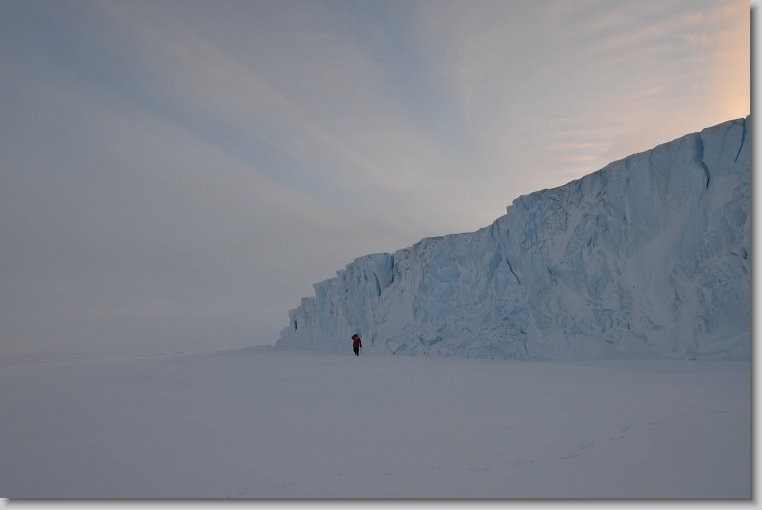
A native of Canton, NY, Brandt has spent eleven seasons in Antarctica and eight in the Arctic. He began this route as a young man interested in physics and the outdoors, eventually studying geophysics at graduate school in Washington, glaciology, and ultimately, how snow affects climate. While in Antarctica, Brandt and his colleagues collected what was at the time the deepest and oldest ice core. It is in the ice that things like carbon dioxide are trapped, buried under hundreds of thousands of years of snow and ice. When dug, ice cores serve — similar to tree rings — as a record of climate, so that people like Brandt can travel back in time, in a sense. It sounds complicated, and it truly is, but when Brandt explains it, it all makes sense and it's amazing. His small office at the ASRC is papered with large maps of Greenland and Antarctica, and as he points to the places all over the continent that he worked at, he shares what he was looking for in the ice and snow, and what he learned. It's remarkable.
Brandt typically spends half of his days at the ASRC working with the instruments on site at the lodge and on the summit. The other days he's in the lab looking at data, repairing equipment, co-authoring scientific papers, and talking to people like me, who want to learn more about the ASRC. On wintery summit days, he'll ride up to the summit on a snowmobile with Paul and return to the lodge on his cross-country skis. Living in the Adirondacks has been wonderful for him and his wife, where they are close to their kids and grandkids. He told me that he feels "it's a wonderful place to be."
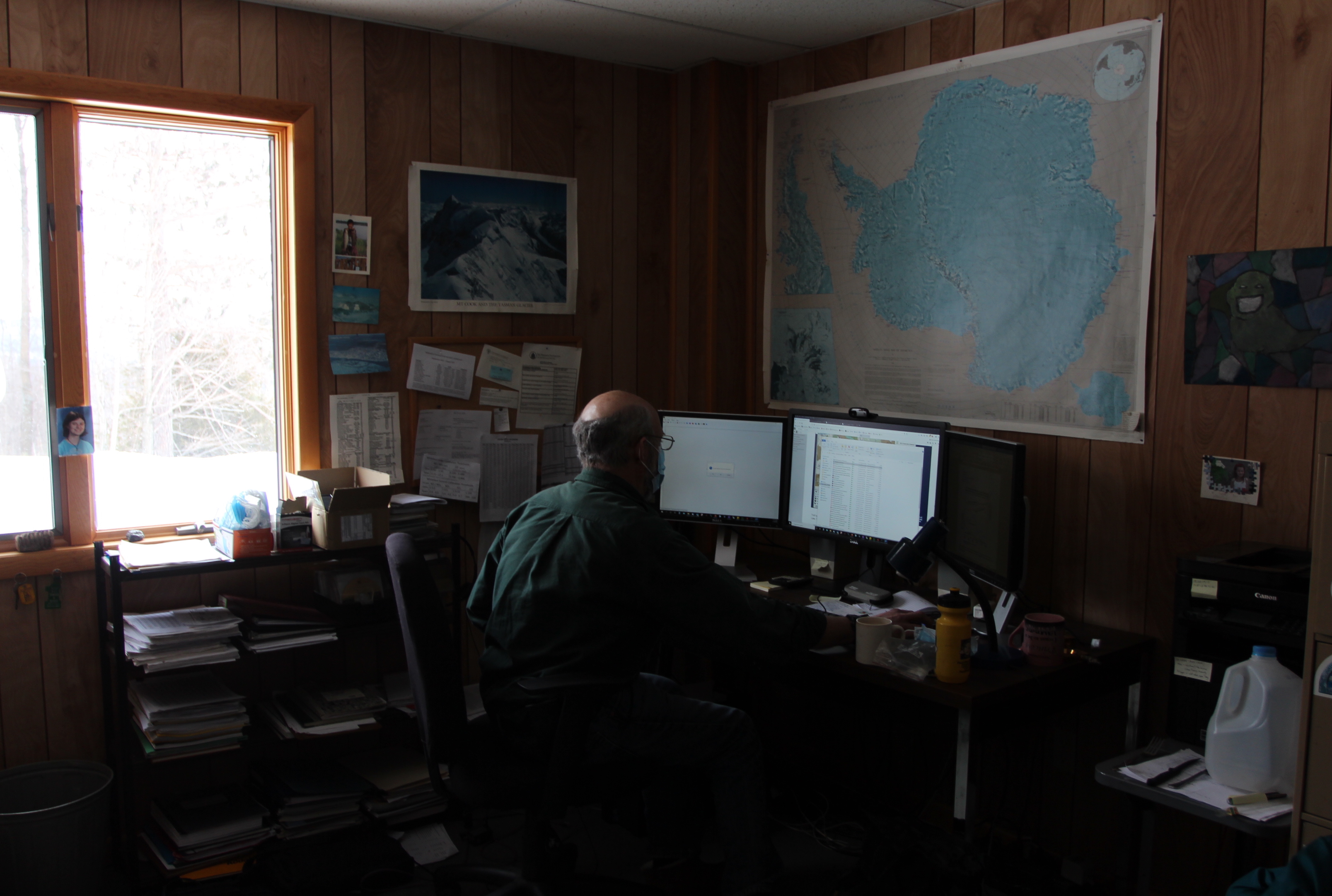
Because the ASRC has been collecting data for so many years, it has built up an impressive record of what is going on in the atmosphere here. It is because of long-term ASRC data sets (we're talking decades) that we can see that acidity in precipitation has decreased, and that pollution controls have, over time, made an impact on the air we breathe. Like Paul Casson, Brandt, who started his job at the ASRC in 2011, is an enthusiastic advocate for the work being done. Brandt describes his work as "documenting the environment," pointing out that his role is to ensure that accurate, unbiased data is produced, so that it may be utilized by scientists and policy-makers all over the globe. As a matter of fact, the data is publicly available for anyone who wants to take a look.
Shari Kent
The ASRC lodge, where Paul Casson's office is, where lectures, classes, and special events take place, is the former site of the Marble Mountain ski area lodge. The weathered logs and the handsome stone fireplace make it an inviting spot, and the windows looking down into Jay and across the valley are stunning. And yet that is just part of the building's uniqueness, for the lodge is home to displays of natural specimens and vintage scientific equipment that was once used by ASRC staff. The day I visited, I was given a tour of these displays by Shari Kent, the Whiteface Field Station's Staff Assistant and self-described "Gal Friday." Shari has been on the staff since 1984; her wealth of knowledge of the ASRC's history is incredible, but what is even better is her wonderful, cheerful willingness to share it with visitors.
Shari can tell you about everything. In fact, when it comes to the equipment, she used to operate some of it. Curious about that boxy looking thing with the paper and needle? It's a barograph, a recording barometer and Shari can tell you all about how it works and her role in working with it to catalog the data it collected, back before devices like that were modernized and automated. Over the years, Shari has been involved collecting wind speed data, collecting fluorocarbons, and manual cloud collection. She's still a backup for precipitation collection and it becomes clear to me that the staff at the field station is a great team sharing a common purpose and drive.
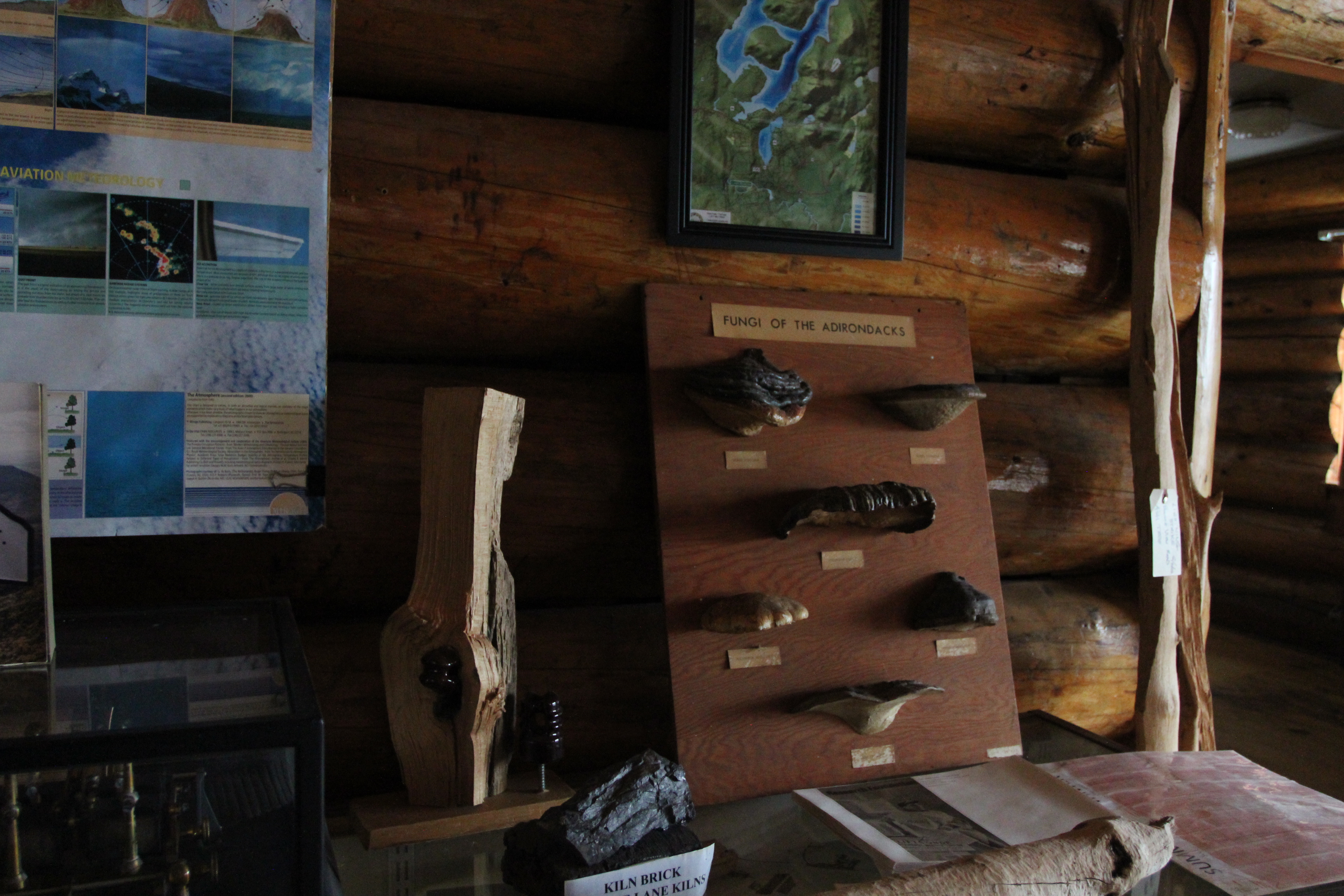
One of the items on display is a slice of a tree. This isn't just a decorative piece of wood, it is a record of climate, and an example of how weather in the Adirondacks — right on the very mountain we stand on — literally shapes nature. Shari points out how the tree rings aren't a perfect circle like a bullseye; rather, the heart of the tree is off-center. She explains that the ferocious winds that rip down the side of the mountain caused the tree to grow more on the side facing away from the wind. Shari draws my attention out the windows, where a "flagpole" tree is a living example: most of the branches face in one direction, not all around the tree, due to the wind.
Shari is completely at ease sharing details of the ASRC's history and the unique people who have worked there. A few decades ago, the ASRC hosted summer students, who not only worked at the field station, but lived there, too. Shari grew up between Jay and Au Sable Forks and one of her first jobs at the ASRC was in the summer working with the kitchen crew to feed all those students. Friendly and enthusiastic, Shari is happy to point out and explain the old liftsonde on display, a small, boxy portable weather station that used to go up and down the chair lift over at the Whiteface ski area, or share stories about her dad skiing at Marble Mountain when he was young. Like Paul and Richard, Shari loves her job, describing it as a "truly delightful place to work." She's looking forward to this year's Falconer lecture series, which will be hosted on Zoom, and the return of schoolkids. She appreciates how user-friendly and welcoming the facility is for everyone. Funny thing: when I was in 8th grade, I went on a school trip there myself.
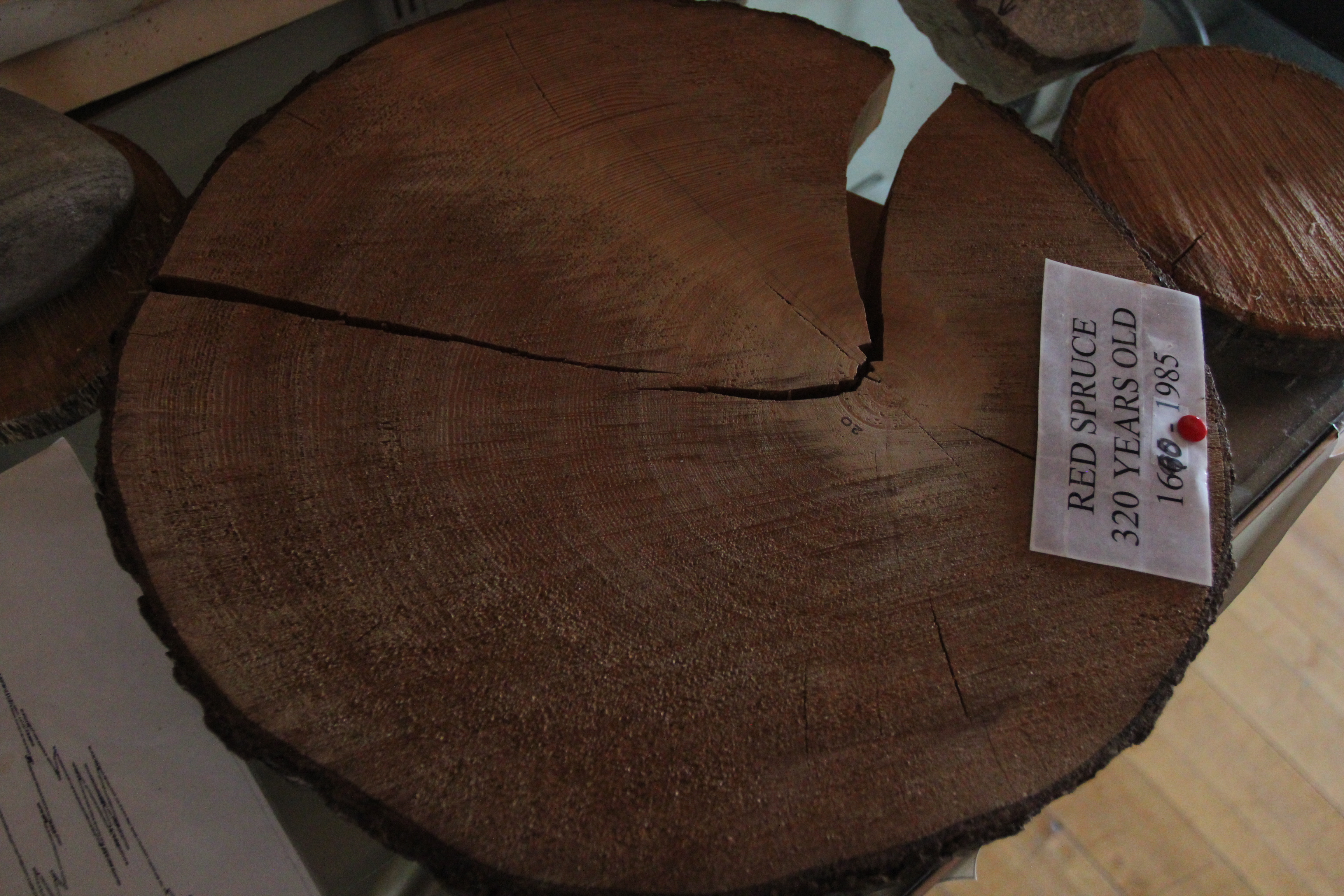
If you're in the Whiteface Region and looking to visit the ASRC, please call ahead to inquire. The staff maintains an excellent Facebook page with up to date weather info and photos that give a sense of how extreme — and extremely beautiful — the weather on the mountain can be. The spring Falconer lecture series is taking off and includes presentations on topics such as extreme weather, climate-resistant food chains, and Adirondack alpine stewardship. You can learn more on Facebook.
